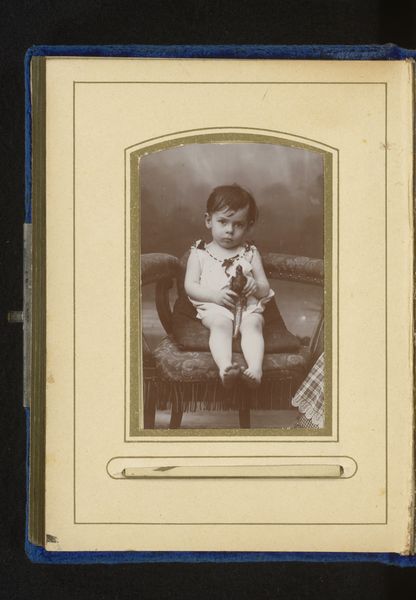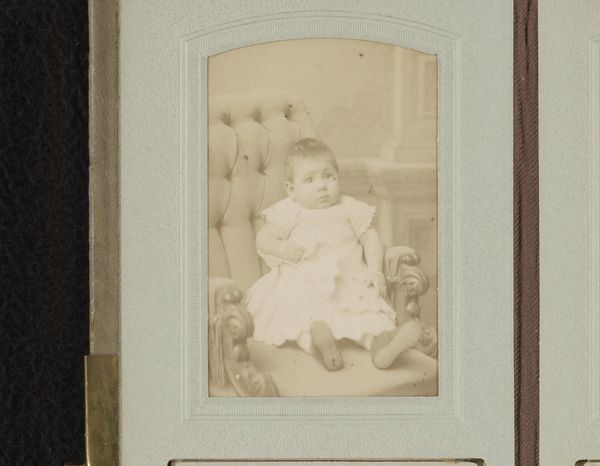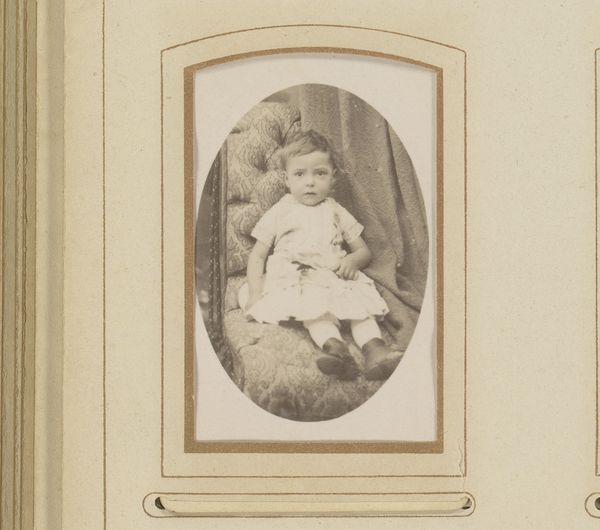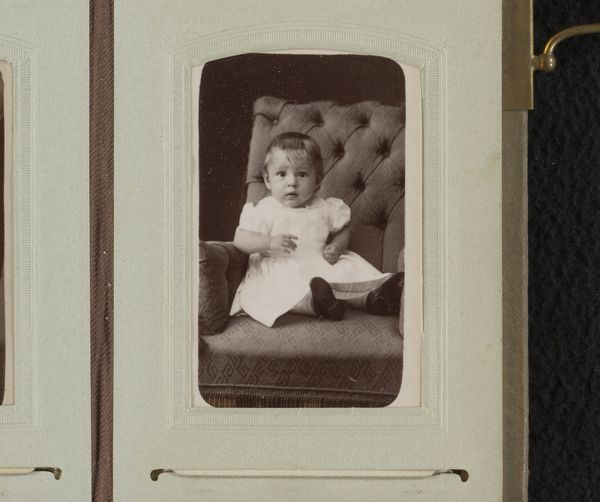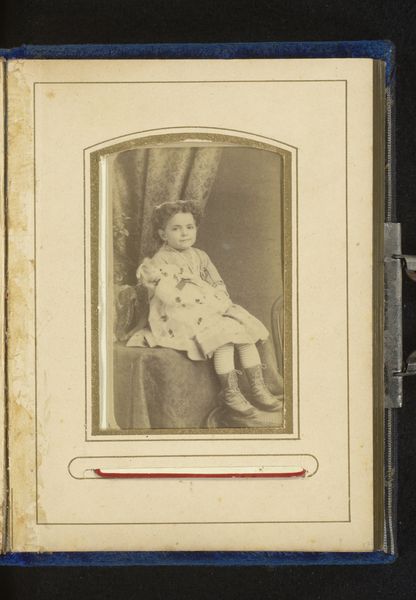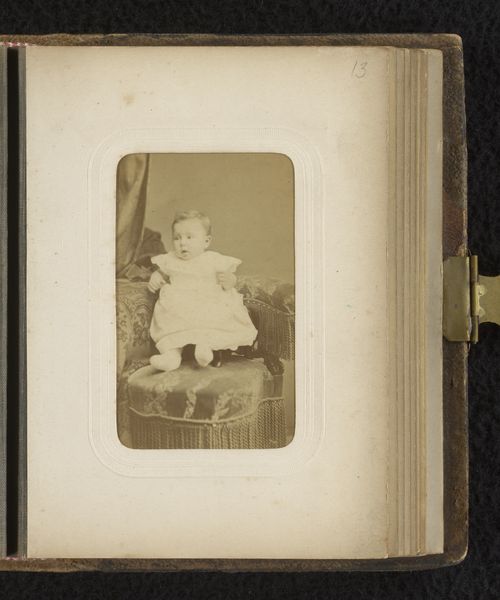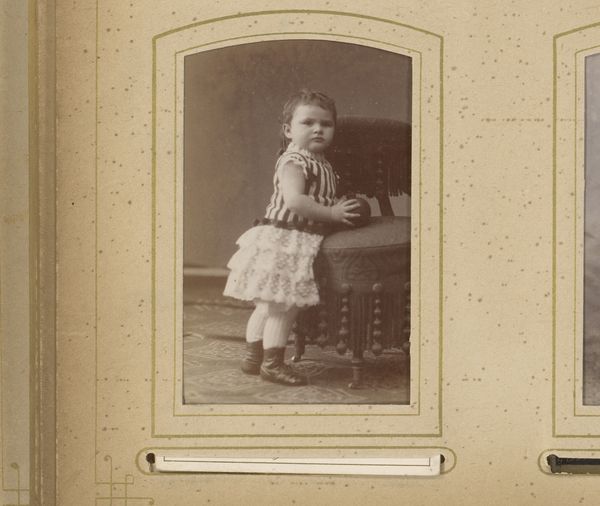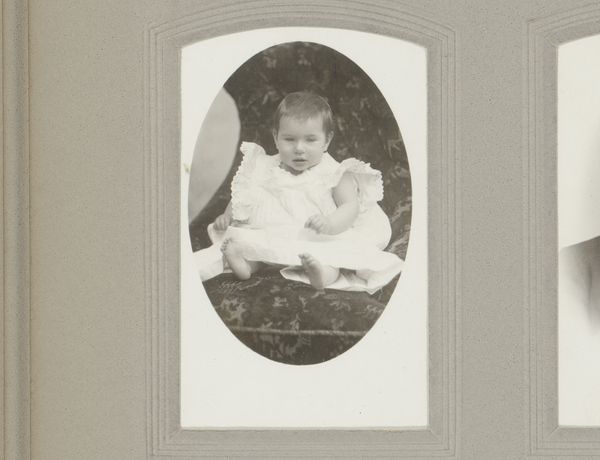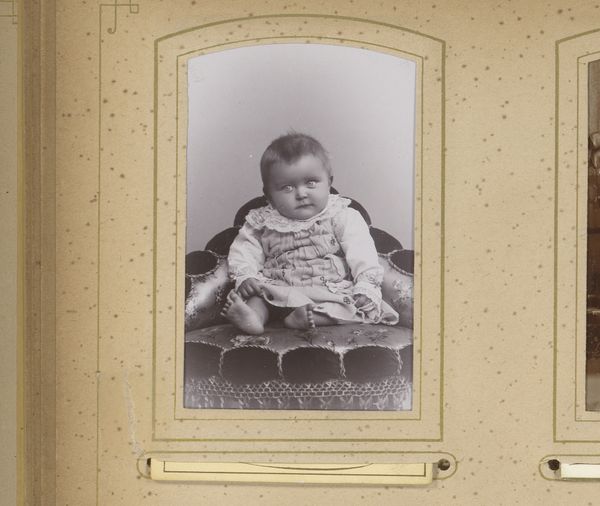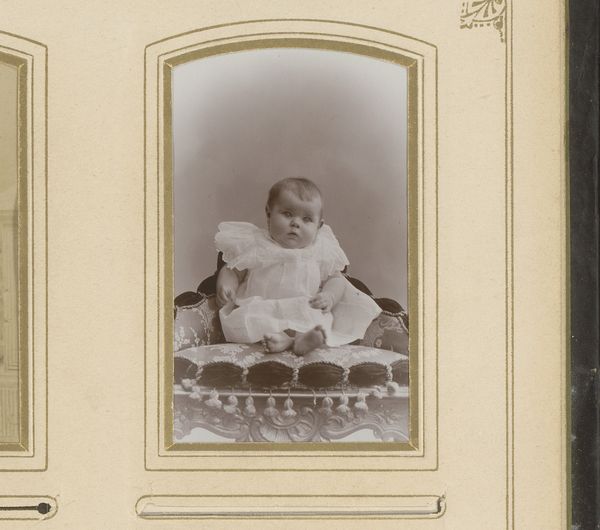
Dimensions: height 86 mm, width 56 mm
Copyright: Rijks Museum: Open Domain
Curator: Welcome. Here we have a rather endearing image, titled "Portret van een zittende jongen," which translates to "Portrait of a Seated Boy." It is estimated to have been created sometime between 1880 and 1920. The artwork utilizes the gelatin-silver print process on paper. Editor: The tones here are quite gentle, muted even. It gives the photograph a wonderfully soft and timeless quality, yet the rigidity of the framing also calls my attention. Curator: That rigidity is quite intentional. These studio portraits became popular markers of social status and familial pride, carefully staged to project an image of respectability. Photography offered a more accessible route to portraiture, thus becoming widely popular. Editor: Accessible, perhaps, but let's think about the materiality. The photographic process of gelatin-silver printing involved a delicate layering of chemistry. Moreover, studio lighting and painted backdrops contributed significantly to the outcome of these photographs, thus adding theatrical qualities to the art. Curator: True, and studios cultivated entire economies. The photographer, like Desvignes in this case, controlled every aspect to shape the family's visual identity to fit societal norms. Editor: Exactly, and considering how easily these images circulated, the photographic paper itself—its production and accessibility—is vital to understanding how the consumption of such imagery influenced the self-perception of the upper middle class. These portraits weren't just about documenting a likeness, but about making statements on labor, class and societal belonging. Curator: Indeed, it's an object ripe with meaning. The subtle details of dress, pose, and setting speak volumes about the subject's place in society at that particular historical moment. The social codification embedded in portraits made sure it reflected societal aspirations. Editor: Ultimately, portraits such as this, provide rich materials to understand not just an individual's likeness, but the labor, process, and even aspirations tied to the tangible elements of production that have now become records of past social and visual culture. Curator: Agreed. A wonderful intersection of art, technology, and society presented in a single image.
Comments
No comments
Be the first to comment and join the conversation on the ultimate creative platform.
